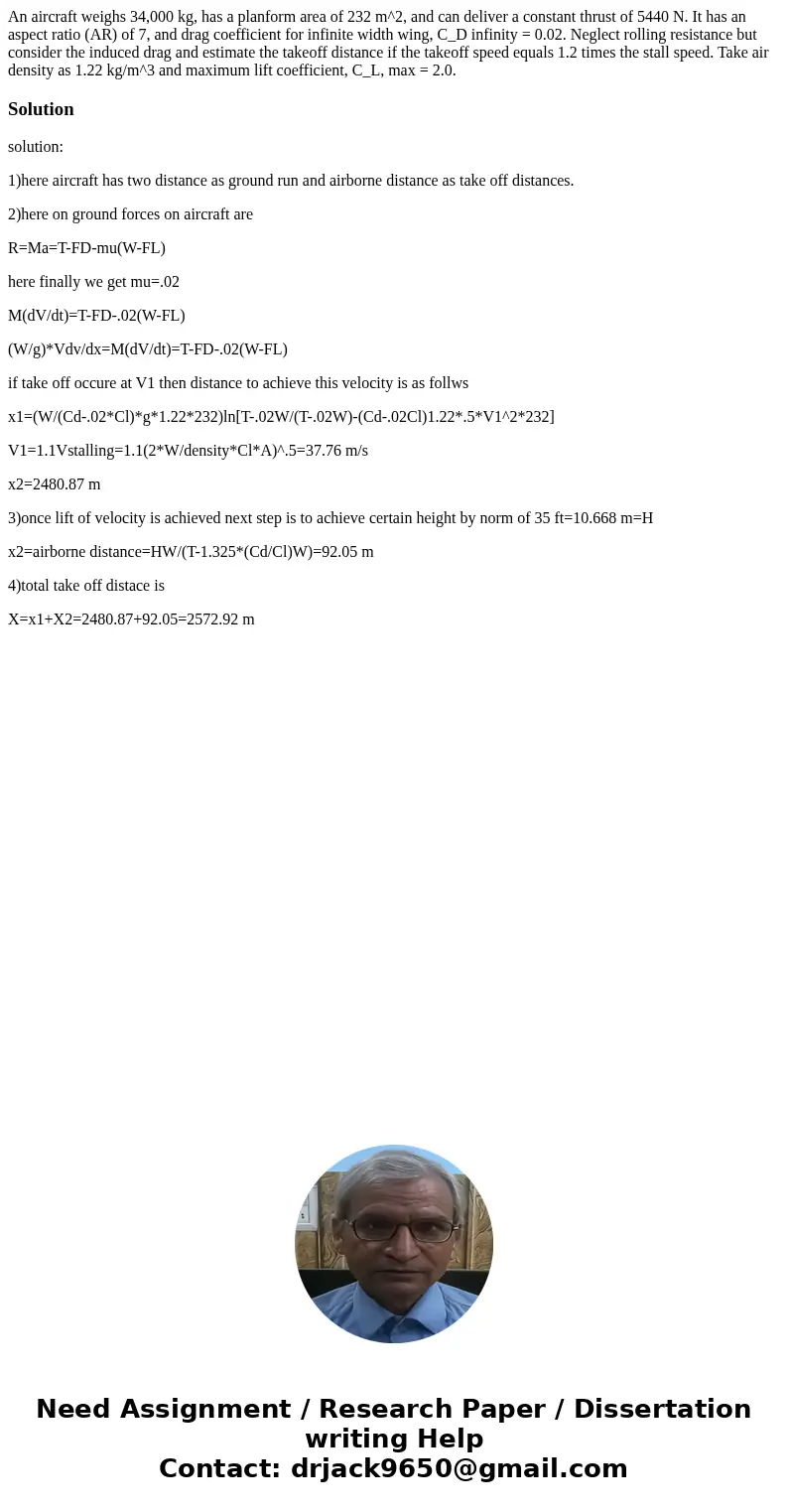An aircraft weighs 34000 kg has a planform area of 232 m2 an
An aircraft weighs 34,000 kg, has a planform area of 232 m^2, and can deliver a constant thrust of 5440 N. It has an aspect ratio (AR) of 7, and drag coefficient for infinite width wing, C_D infinity = 0.02. Neglect rolling resistance but consider the induced drag and estimate the takeoff distance if the takeoff speed equals 1.2 times the stall speed. Take air density as 1.22 kg/m^3 and maximum lift coefficient, C_L, max = 2.0.
Solution
solution:
1)here aircraft has two distance as ground run and airborne distance as take off distances.
2)here on ground forces on aircraft are
R=Ma=T-FD-mu(W-FL)
here finally we get mu=.02
M(dV/dt)=T-FD-.02(W-FL)
(W/g)*Vdv/dx=M(dV/dt)=T-FD-.02(W-FL)
if take off occure at V1 then distance to achieve this velocity is as follws
x1=(W/(Cd-.02*Cl)*g*1.22*232)ln[T-.02W/(T-.02W)-(Cd-.02Cl)1.22*.5*V1^2*232]
V1=1.1Vstalling=1.1(2*W/density*Cl*A)^.5=37.76 m/s
x2=2480.87 m
3)once lift of velocity is achieved next step is to achieve certain height by norm of 35 ft=10.668 m=H
x2=airborne distance=HW/(T-1.325*(Cd/Cl)W)=92.05 m
4)total take off distace is
X=x1+X2=2480.87+92.05=2572.92 m

 Homework Sourse
Homework Sourse